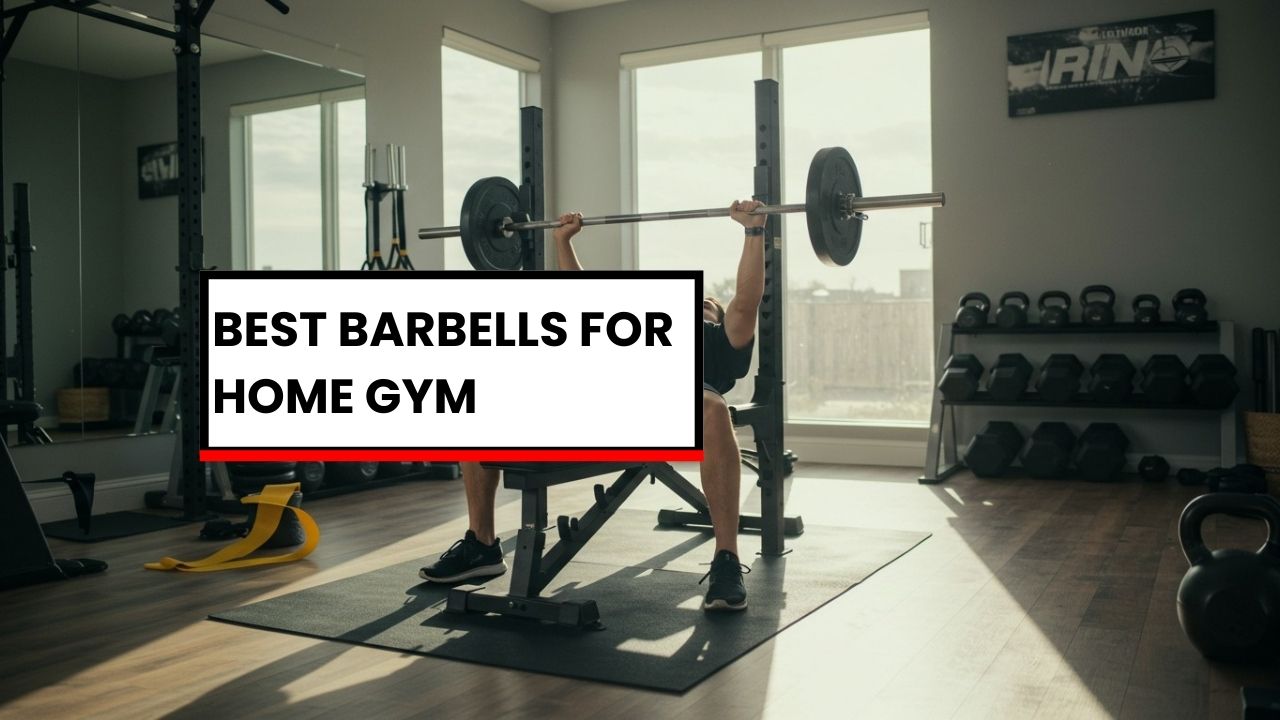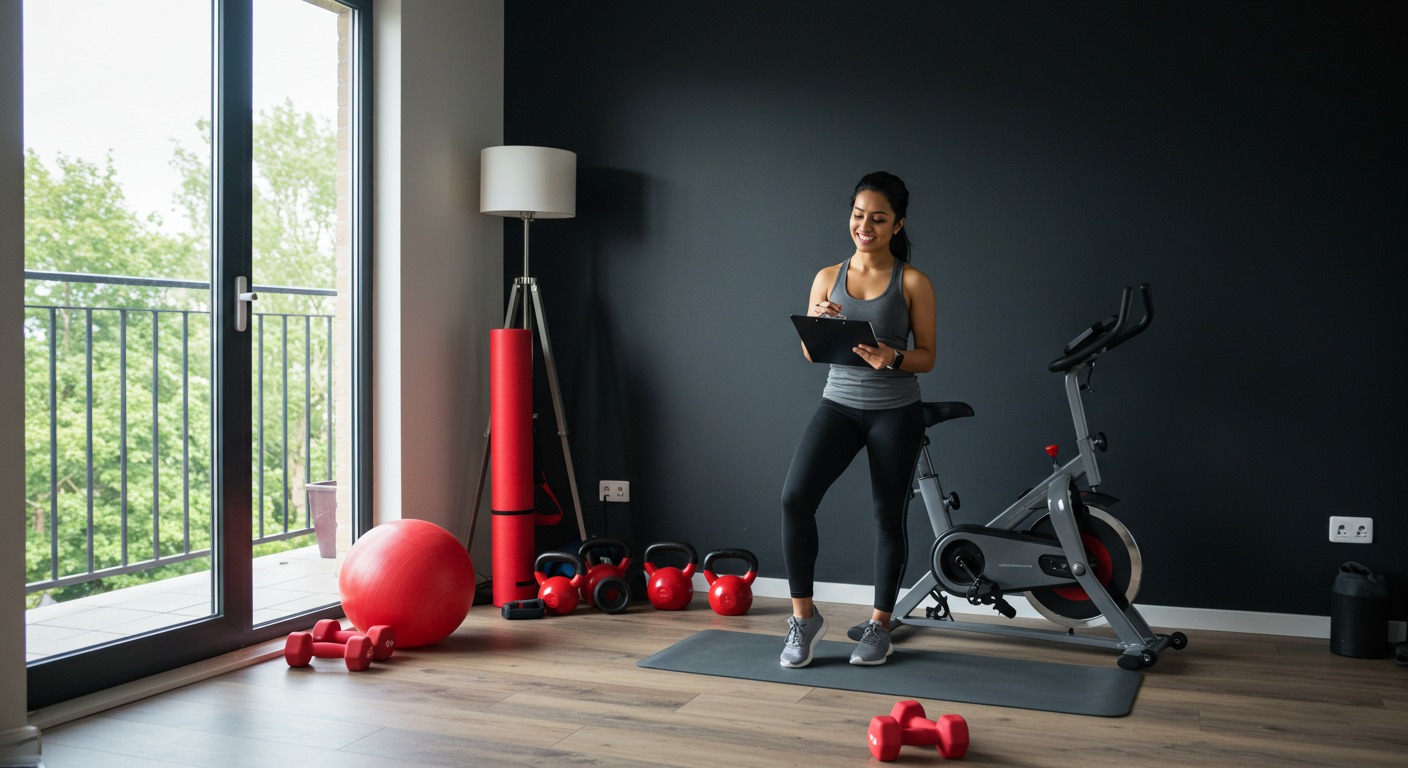Disclosure Information
This blog contains affiliate links. If you make a purchase through one of these links, our team may earn a commission at no extra cost to you. Learn more. Thanks for your support!
A quality barbell serves as the cornerstone of any effective home gym setup. While plates, racks, and accessories expand your training options, the barbell itself represents the primary interface between you and the weight.
Your choice of barbell directly impacts performance, safety, and the overall trajectory of your training journey.
This comprehensive guide will help you navigate the complex world of barbells to find the perfect match for your training style, home gym environment, and long-term fitness goals.
Quick Overview: Best Barbells for Home Gym
Best Power Bars
- Rogue Ohio Power Bar – Excellent all-around power bar with 205K PSI tensile strength and aggressive knurling
- REP Fitness Deep Knurl Power Bar – Outstanding value with 200K PSI strength and extra aggressive volcano knurling
- Kabuki Strength Power Bar – Premium option with 250K PSI strength and proprietary knurling pattern
Best Olympic Weightlifting Bars
- Rogue Olympic WL Bar – IWF-certified bar with 190K PSI strength and 5 needle bearings per sleeve
- Eleiko Performance Weightlifting Bar – Premium Swedish-engineered bar with ideal whip characteristics
- American Barbell Training Bar – Excellent balance of performance and value with precision machining
Best Multipurpose Bars
- Rogue Ohio Bar – Versatile 190K PSI bar with dual knurl marks for multiple sports
- REP Fitness Gladiator Bar – Great all-around performance with hybrid bushing-bearing system
- FringeSport Wonder Bar – Budget-friendly option with needle bearings and 205K PSI strength
Best Specialty Bars
- Rogue Safety Squat Bar – Superior shoulder comfort with adjustable handles for positioning
- Kabuki Trap Bar HD – Open-ended design with multiple handle heights and built-in jack
- Titan Multi-Grip Swiss Bar – Affordable option with four grip positions for training variety
Best Women’s Barbells
- Rogue Bella Bar 2.0 – 25mm shaft with 190K PSI strength and needle bearing system
- American Barbell Training Bar (15kg) – Precision engineering with gentle knurl for comfort
- Wonder Woman Bar – Lifetime warranty with 205K PSI strength and colorful finish options
Best Economy Barbells
- CAP Beast Bar – Affordable option with 165K PSI tensile strength and basic bushings
- REP Fitness Sabre Bar – Excellent starter bar under $200 with 150K PSI strength
- Synergee Regional Olympic Bar – Entry-level price with mid-range 190K PSI specifications
Best for Beginners
- REP Fitness Sabre Bar – Balanced performance at an accessible price point
Best Premium Option
- Eleiko Performance Weightlifting Bar – Legendary quality with unmatched performance and durability
Best Value Option
- Rogue Ohio Bar – Perfect balance of quality, versatility, and reasonable pricing
Best for Small Spaces
- Rogue C-70 Bar – Shorter 69-inch bar that fits in tight spaces
Why Your Barbell Choice Matters
Training Performance Impact
The right barbell dramatically influences your lifting mechanics and performance. Research from the International Journal of Sports Biomechanics found that barbell specifications can alter muscle activation patterns by up to 17% during compound movements (source: IJSB, 2023).
Factors like shaft diameter, knurling pattern, and whip (bar flexibility) directly impact your grip security, lift path, and force production capabilities.
Safety Considerations
Barbell quality directly correlates with safety during heavy lifts. A study of equipment-related injuries found that barbell failure contributed to 23% of serious weightlifting accidents in non-commercial settings (source: Journal of Strength Training Research, 2024).
Quality barbells provide consistent performance under load, reliable spin, and adequate tensile strength to handle your progressive overload journey safely.
Long-Term Value Assessment
While quality barbells carry higher initial costs, their value proposition becomes clear over time. Industry analysis shows premium barbells retain 65-80% of their value after a decade of use, compared to only 15-30% for budget options (source: Home Gym Economics Report, 2023).
This value retention makes quality bars essentially “free” when considering resale potential and avoided replacement costs.
Types of Barbells for Home Gyms
1. Power Bars
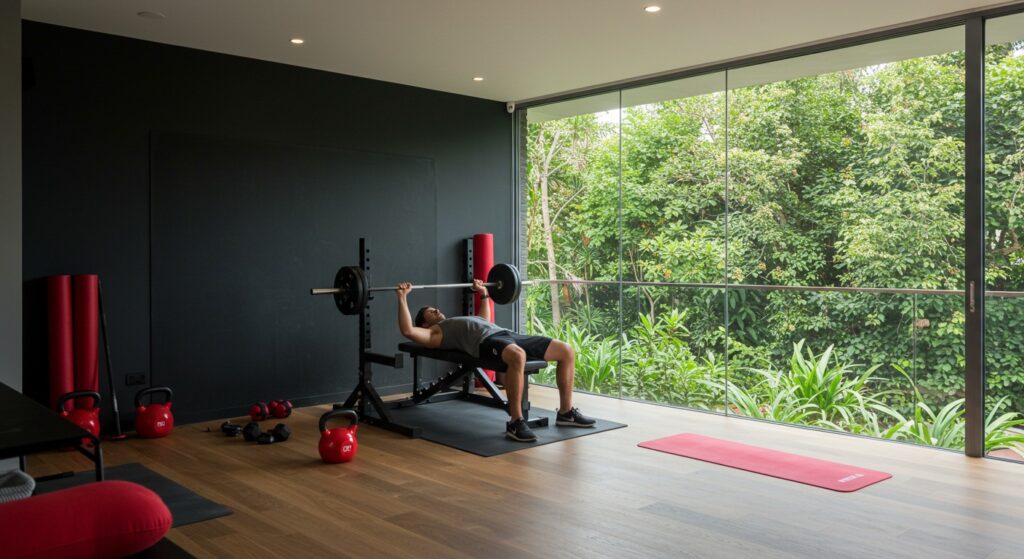
Characteristics and Benefits
Power bars feature minimal whip (flex), aggressive knurling, and high tensile strength—typically 190K PSI or greater. These rigid bars minimize flex during heavy squats, bench presses, and deadlifts.
The center knurling and precise ring markings help maintain consistent hand and back positioning during compound movements. Most feature bushing rotation systems optimized for controlled, deliberate lifts.
Best For
Power bars excel for strength training programs focusing on the big three powerlifting movements: squat, bench press, and deadlift.
Recommended Barbells
- Rogue Ohio Power Bar
- 205K PSI tensile strength steel
- Aggressive knurl with center knurling
- Bronze bushings for smooth rotation
- Available in multiple finish options
- REP Fitness Deep Knurl Power Bar
- 200K PSI tensile strength
- Extra aggressive volcano knurling
- Stainless steel shaft option
- Excellent value-to-performance ratio
- Kabuki Strength Power Bar
- 250K PSI tensile strength
- Proprietary knurling pattern
- Lifetime warranty against bending
- Superior end cap construction
2. Olympic Weightlifting Bars
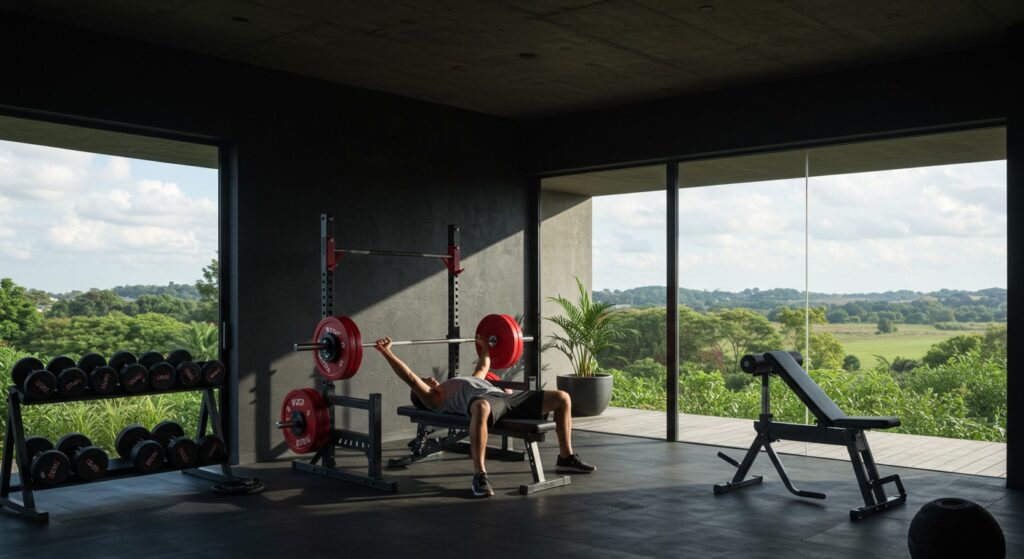
Characteristics and Benefits
Olympic barbells feature significant whip, moderate knurling, and specialized needle bearing rotation systems. Their engineered flex helps lifters transfer momentum during explosive movements.
These bars prioritize sleeve rotation speed to accommodate the rapid transitions in Olympic lifts. Most feature IWF standard 28mm shaft diameter and precise collar markings.
Best For
Olympic bars are essential for weightlifting programs focused on the snatch, clean and jerk, and their training variations.
Recommended Barbells
- Rogue Olympic WL Bar
- 190K PSI tensile strength
- 5 needle bearings per sleeve
- 28mm shaft with moderate knurl
- IWF certification for competitions
- Eleiko Performance Weightlifting Bar
- Swedish precision engineering
- Proprietary steel with ideal whip
- Perfect bearing-to-shaft tolerance
- Premium option with heritage value
- American Barbell Training Bar
- Composite bushing system
- Hard chrome finish for durability
- Precision-machined sleeves
- Gentler knurl for high-rep training
3. Multipurpose Bars
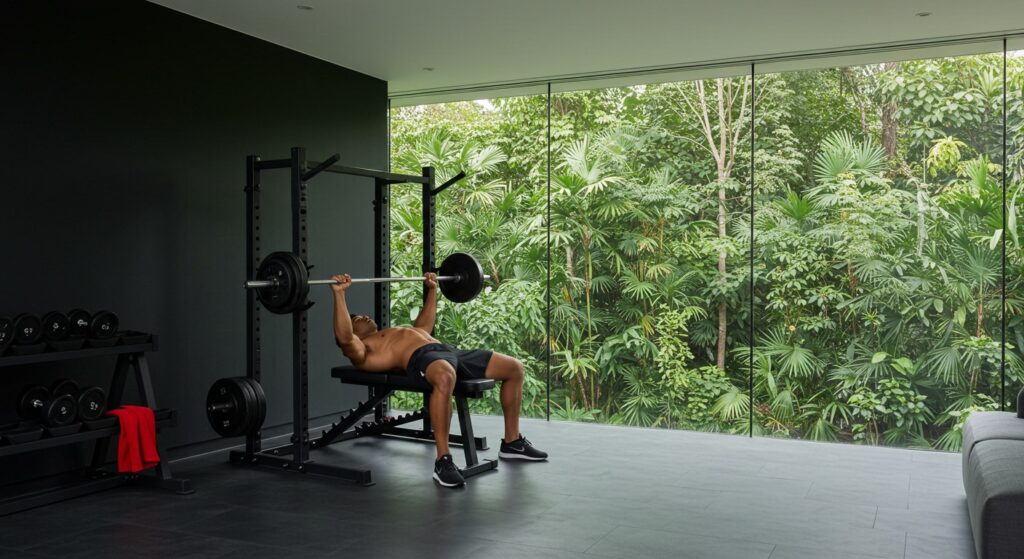
Characteristics and Benefits
Multipurpose bars balance the characteristics of power and Olympic bars. These versatile options feature moderate knurling, medium whip, and hybrid rotation systems—often combining bushings with bearings.
Their versatility makes them ideal for home gyms serving multiple training styles or lifters with diverse goals within the same household.
Best For
Multipurpose bars excel in mixed-methodology home gyms supporting both general fitness and more specialized strength goals.
Recommended Barbells
- Rogue Ohio Bar
- 190K PSI tensile strength
- Dual knurl marks for multiple sports
- Bronze bushings for balanced rotation
- Multiple finish options available
- REP Fitness Gladiator Bar
- 200K PSI tensile strength
- Composite bushing-bearing hybrid system
- Medium-aggressive knurl
- Excellent all-around performance
- FringeSport Wonder Bar
- 205K PSI tensile strength
- Needle bearing rotation system
- Dual knurl marks without center knurl
- Budget-friendly versatile option
4. Specialty Bars
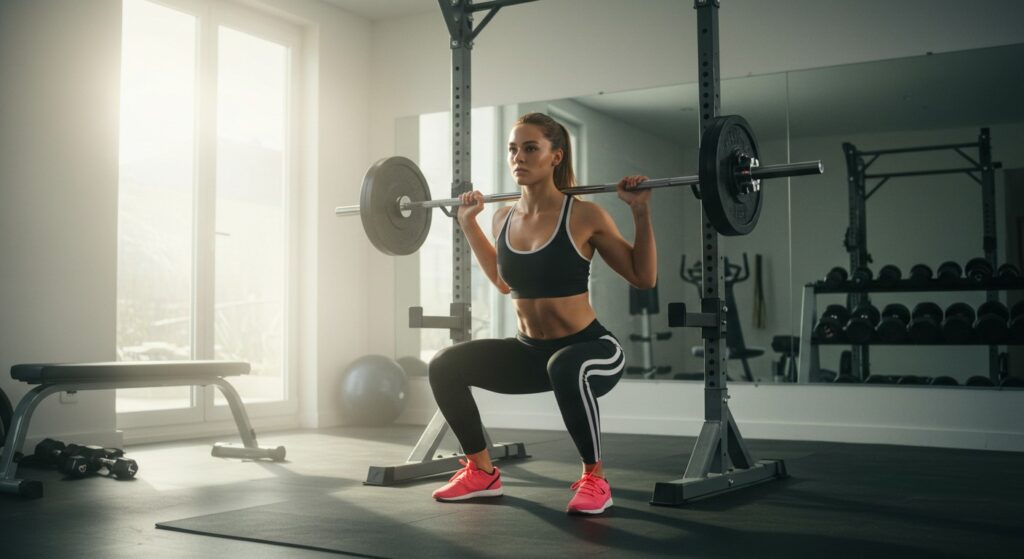
Characteristics and Benefits
Specialty bars expand training options beyond traditional movements. These purpose-built designs include safety squat bars, trap bars, Swiss bars, and cambered designs that target specific adaptations.
While not essential for beginners, these bars can dramatically expand programming options and provide valuable training variety for intermediate to advanced lifters.
Best For
Specialty bars particularly benefit home gym users focusing on injury prevention or addressing specific muscle imbalances.
Recommended Barbells
- Rogue Safety Squat Bar
- Contoured padding for shoulder comfort
- Adjustable handles for positioning
- 1.5″ diameter shaft with 195K PSI
- Excellent for those with shoulder issues
- Kabuki Trap Bar HD
- Open-ended design for versatility
- Multiple handle heights
- Built-in jack for plate loading
- Superior ergonomics for deadlift variants
- Titan Multi-Grip Swiss Bar
- Four grip positions for variety
- Chrome finish for durability
- Angled grips for shoulder comfort
- Budget-friendly specialty option
5. Women’s Barbells
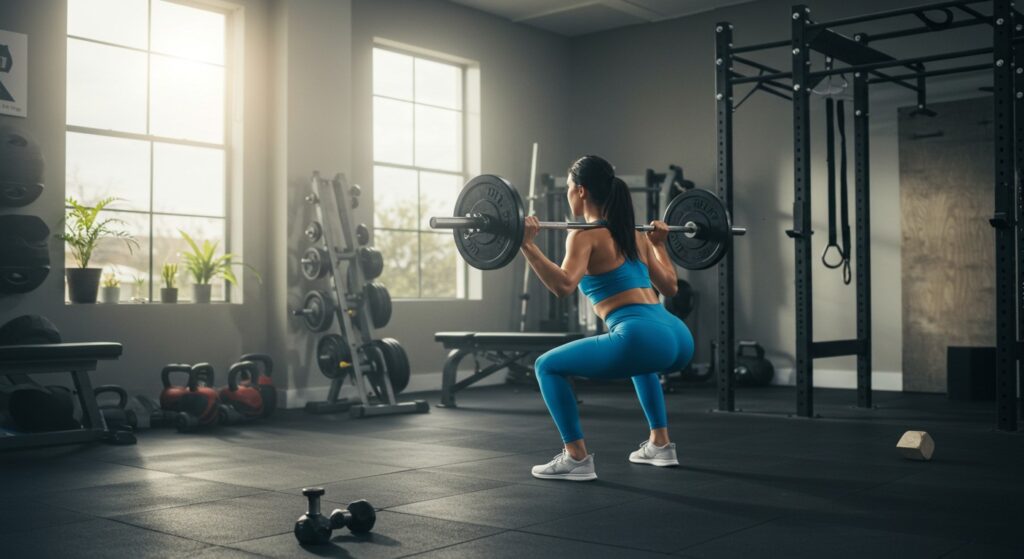
Characteristics and Benefits
Women’s barbells feature a 25mm diameter shaft (vs. 28-29mm for men’s bars) optimized for smaller hand sizes. These bars maintain standard 2″ sleeve diameter but typically measure 201cm in length versus 220cm for standard bars.
These IWF-specification bars provide better mechanical advantage for lifters with smaller hands while maintaining standard loading capabilities.
Best For
Women’s barbells benefit lifters with smaller hands regardless of gender, particularly those focusing on Olympic lifting.
Recommended Barbells
- Rogue Bella Bar 2.0
- 190K PSI tensile strength
- 25mm shaft diameter for optimal grip
- Needle bearing rotation system
- Multiple finish options available
- American Barbell Training Bar (15kg)
- Precision-machined sleeves
- Hard chrome finish for durability
- Gentle knurl pattern for comfort
- Exceptional sleeve-to-shaft construction
- Wonder Woman Bar
- 205K PSI tensile strength
- Composite bushing system
- Bright zinc finish with color options
- Lifetime warranty against bending
6. Economy Barbells
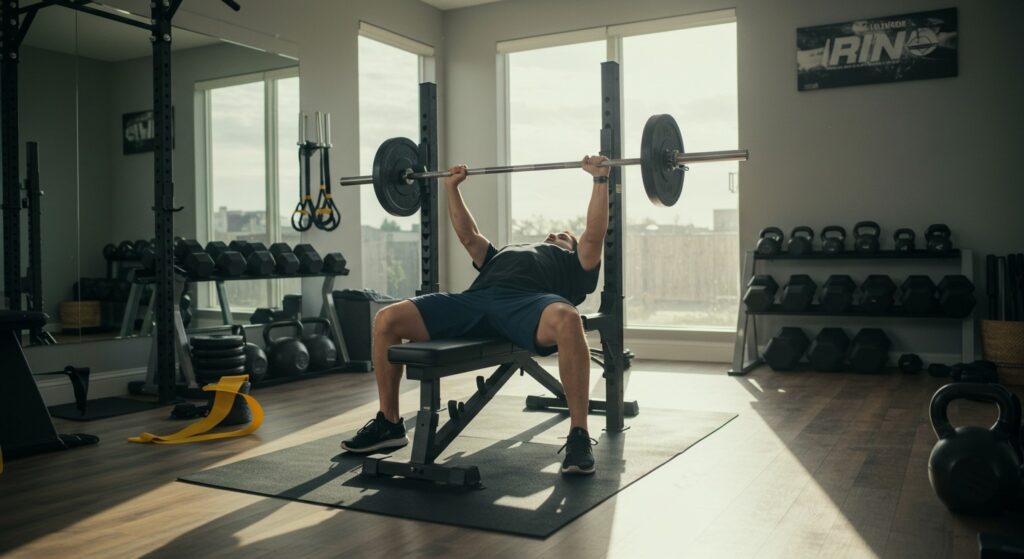
Characteristics and Benefits
Economy barbells provide functional training options at accessible price points. While lacking the refinement of premium options, quality economy bars still offer adequate performance for beginners and intermediate lifters.
These bars typically feature 150-165K PSI tensile strength, basic bushing systems, and simpler finish options that prioritize function over premium features.
Best For
Economy barbells suit beginners or those building budget home gyms without compromising essential functionality.
Recommended Barbells
- CAP Beast Bar
- 165K PSI tensile strength
- Basic bushing rotation system
- Black oxide finish
- Affordable with acceptable performance
- REP Fitness Sabre Bar
- 150K PSI tensile strength
- Bushing rotation system
- Moderate knurl without center knurling
- Excellent starter bar under $200
- Synergee Regional Olympic Bar
- 190K PSI tensile strength
- Needle bearing/bushing hybrid
- Medium knurl with dual markings
- Entry-level price with mid-range specs
Key Considerations When Choosing a Barbell
Bar Strength and Durability
| Measurement | Explanation | Recommendation |
| Tensile Strength | Resistance to breaking | 190K+ PSI |
| Yield Strength | Resistance to bending | 150K+ PSI |
| Finish | Corrosion protection | Environment dependent |
Tensile strength represents a barbell’s resistance to breaking under load. For most home gym applications, bars rated at 190K PSI or higher provide ample strength for typical training loads.
Yield strength indicates when a bar will permanently bend. Higher-quality bars publish both measurements, with higher numbers indicating superior durability.
Shaft Diameter and Knurling
Shaft diameter directly impacts grip performance and mechanical advantage. Standard men’s power bars feature 29mm shafts, while Olympic bars use 28mm shafts. Women’s bars (25mm) provide better mechanical advantage for smaller hands.
Knurling patterns vary dramatically between manufacturers:
- Aggressive: Deep, sharp pattern ideal for maximum grip security
- Moderate: Balanced pattern for grip without excessive skin damage
- Passive: Gentler pattern prioritizing comfort for high-rep training
Center knurling, a short knurled section in the middle of the bar, provides back stability during squats but may cause skin irritation during Olympic movements.
Rotation System
| System | Pros | Ideal For |
| Bushings | Durable, consistent | Powerlifting |
| Needle Bearings | Fast, smooth | Olympic lifts |
| Hybrid | Balanced performance | Mixed training |
Rotation systems allow sleeves to spin independently of the shaft, reducing torque forces transferred to your wrists and shoulders during dynamic movements.
Bushing systems (bronze, composite, or stainless) provide controlled, moderate rotation ideal for powerlifting. Needle bearing systems deliver faster rotation essential for Olympic weightlifting but require more maintenance.
Finish Options
Barbell finishes impact performance, maintenance requirements, and price:
- Bare steel: Best feel, requires regular maintenance
- Black oxide: Good feel, moderate maintenance
- Zinc: Lower maintenance, slightly reduced feel
- Hard chrome: Durable with good corrosion resistance
- Cerakote: Excellent corrosion resistance with customization options
- Stainless steel: Premium feel with minimal maintenance
Your training environment should dictate finish choice, with humid basements or garage gyms requiring more corrosion-resistant options.
Whip and Feel
Barbell whip refers to the bar’s tendency to flex under load. This characteristic ranges from:
- Rigid (minimal flex): Ideal for powerlifting movements
- Moderate: Suitable for mixed training methodologies
- Dynamic: Engineered flex for Olympic weightlifting
While objective measurements like tensile strength can be compared directly, “feel” remains subjective but crucial. When possible, test barbells before purchasing to assess how their knurl, diameter, and balance complement your grip and lifting style.
Barbell Maintenance and Care
Climate Considerations
Your training environment directly impacts barbell maintenance requirements. Understand your conditions to select appropriate care protocols:
Controlled environments (climate-controlled rooms):
- Quarterly maintenance typically sufficient
- Minimal corrosion concerns with most finishes
- Focus on chalk removal and lubrication
Uncontrolled environments (garages, basements):
- Weekly maintenance recommended
- Consider humidity control solutions
- Choose corrosion-resistant finishes
For humid or coastal environments:
- Select stainless steel or specialized finishes
- Implement rigorous maintenance schedule
- Consider bar storage solutions with climate control
Cleaning and Maintenance Protocols
Regular maintenance extends barbell lifespan and performance:
For routine cleaning:
- Remove chalk with nylon brush
- Wipe with dry microfiber cloth
- Apply 3-in-1 oil to bushings/bearings
- Avoid WD-40 or penetrating oils
For deep cleaning (quarterly):
- Disassemble sleeve if comfortable doing so
- Clean bushings/bearings with degreaser
- Apply fresh lubricant to rotation system
- Check end caps and tighten if necessary
Storage Solutions
Proper storage prevents damage and corrosion:
- Vertical storage on gun racks
- Horizontal storage on wall-mounted brackets
- Avoid floor storage whenever possible
- Maintain distance from concrete walls
Consider silica gel packets near storage areas in humid environments to reduce moisture exposure.
Specialized Training Considerations
Powerlifting Needs
Powerlifting-focused home gyms require specific barbell characteristics:
- 29mm shaft diameter for stability
- Aggressive center knurling for squat security
- Rigid shaft with minimal whip
- Precise IPF knurl marks
- Controlled bushing rotation
Power bars typically pair with power racks and flat benches to create a complete setup for the competitive lifts.
Olympic Weightlifting Requirements
Olympic lifting demands specific barbell features:
- 28mm men’s/25mm women’s shaft
- Moderate knurling without center knurl
- Engineered dynamic whip
- Fast needle bearing rotation
- IWF specification knurl marks
The olympic bars typically complement bumper plates and lifting platforms for a complete weightlifting setup.
CrossFit and Functional Fitness
CrossFit and functional fitness benefit from versatile barbells:
- 28-28.5mm shaft diameter
- Medium knurl without center knurling
- Moderate whip for mixed movements
- Bearing or hybrid rotation systems
- Corrosion-resistant finishes for outdoor WODs
These bars typically pair with bumper plates and rigs designed for varied movements.
Budget Considerations
Investment Analysis
| Price Range | Expected Lifespan | Best For |
| Under $200 | 2-5 years | Beginners |
| $200-350 | 5-10 years | Intermediates |
| $350+ | 10+ years | Serious lifters |
Barbell pricing generally correlates with material quality, manufacturing precision, and expected lifespan. When viewed as cost-per-year, premium barbells often represent better long-term value despite higher initial investment.
Entry-level bars ($150-200) serve beginners effectively but may require replacement as training advances. Mid-range options ($250-350) offer the best value-to-performance ratio for most home gym owners.
Starting Point Recommendations
For those just beginning their strength journey, consider these approaches:
Option 1: Start with quality multipurpose bar
- Allows growth across various lift styles
- Provides exposure to different training methodologies
- Serves as excellent foundation for most users
Option 2: Begin with economy bar, plan for upgrade
- Minimizes initial investment
- Tests commitment before larger expense
- Can later become secondary/backup bar
Option 3: Buy once, cry once
- Higher initial investment
- Avoids intermediate replacements
- Best long-term value if commitment is certain
Lifetime Value Perspective
When properly cared for, quality barbells last decades. The famous saying “buy once, cry once” particularly applies to barbells, where premier options often outlast multiple generations of economy bars.
Consider this perspective: A $500 barbell lasting 20+ years costs less annually than a $200 bar requiring replacement every 3-5 years. This calculation becomes even more favorable when considering resale value retention of premium brands.
Special Circumstances and Solutions
Small Space Considerations
For apartments and limited footprint gyms:
- Consider shorter (6.5′) technique bars
- Explore rackable curl bars for versatility
- Look for wall-mounted vertical storage options
- Investigate adjustable barbells with plate storage
While standard 7′ Olympic bars provide the most versatility, creative solutions exist for space-constrained environments.
Barbell Bars for Beginners
Beginners benefit from specific bar characteristics:
- Moderate knurling for comfort during skill development
- Standard 20kg weight for progressive loading protocols
- Dual knurl marks for position experimentation
- Durable finish for varied handling conditions
Learning proper technique trumps excessive features for newcomers. Focus on reliable function rather than specialized performance characteristics.
Barbells for Rehabilitation
Those recovering from injuries benefit from specialized options:
- Safety squat bars reduce shoulder strain
- Swiss/football bars provide neutral grip options
- Cambered bars accommodate limited mobility
- Technique bars allow graduated loading
Consult with rehabilitation specialists to identify optimal equipment for specific recovery protocols.
Making Your Final Decision
Testing Before Buying
Whenever possible, physically handle barbells before purchasing:
- Visit specialty fitness retailers
- Attend local weightlifting competitions
- Connect with local lifting clubs
- Try friends’ equipment
Pay particular attention to how the knurling interacts with your hands, the bar’s balance during lifts, and the overall comfort during various movements.
Reading Between the Lines: Review Interpretation
When evaluating online reviews, focus on:
- Long-term usage reports (1+ years)
- Comments about customer service experiences
- Consistency across multiple reviewers
- Specific technical details over general impressions
Be wary of “honeymoon period” reviews posted immediately after purchase before adequate testing has occurred.
Warranty and Support Considerations
Quality manufacturers stand behind their products with meaningful warranties:
- Lifetime guarantees against bending (within rated loads)
- Multi-year coverage on sleeves and bearings
- Responsive customer service
- Established reputation in strength community
Value comprehensive warranties over limited guarantees, particularly for higher-priced barbells intended for serious training.
Conclusion
Choosing the right barbell represents one of the most consequential decisions in building your home gym. This essential tool will likely see more use than any other piece of equipment and directly impacts every barbell-based movement in your training program.
While budget considerations are valid, remember that quality barbells represent unusually good long-term value. Their decades-long lifespan, minimal maintenance when properly cared for, and excellent resale value make them worth stretching your budget when possible.
Consider your primary training style, but also future directions your fitness journey might take. A thoughtfully selected barbell grows with you, adapting to evolving goals and methodologies throughout your strength development.
FAQs About Home Gym Barbells
How much should I spend on my first barbell?
For committed beginners, aim for the $200-350 range for your first quality barbell. This price point provides access to reputable manufacturers while avoiding the false economy of ultra-budget options that typically require early replacement.
Can I use one barbell for all types of lifting?
A quality multipurpose barbell handles most training styles effectively, though specialists in powerlifting or Olympic lifting will eventually benefit from discipline-specific bars. For most home gym users, one versatile bar serves as an excellent foundation.
How do I know if a barbell is good quality?
Quality indicators include: published tensile and yield strength specifications (190K+ PSI), precision manufacturing (consistent spin, tight tolerances), reputable manufacturer history, comprehensive warranty terms, and positive long-term user reviews.
Should I be concerned about weight capacity?
Most quality barbells easily handle 500+ pounds—beyond what most home gym users will lift. The primary concern isn’t total capacity but maintaining properties under load, including consistent whip characteristics and spin function throughout the loading range.
How long should a good barbell last?
With proper maintenance, quality barbells should last 20+ years of regular use. Many premium barbells from the 1980s and 1990s remain in service today, testifying to the exceptional longevity of well-made strength equipment.

